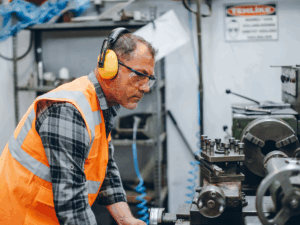June 28, 2022
By Chris Occleshaw, recall consultant
Even as many countries eased pandemic-related restrictions, recent events have introduced a new host of challenges and risks for the five key industries surveyed in our latest edition of the European Recall Index report.
Our report includes analysis of recall data from Q1 2022 across 5 key industries: automotive, consumer product, food and beverage, pharmaceutical, and medical device. In addition to insights about the latest recall data and why recalls declined 2.4% overall, our first quarter report offers an in-depth look at regulatory developments across the EU and UK. We also include insights and analysis from our strategic partners at top law firms in each industry.
Product recall trends in review
The overall decrease in recall activity can be attributed to the pharmaceutical, medical device, and food and beverage sectors, which fell 28.0%, 17.3%, and 10.3% respectively from the previous quarter. In contrast, the automotive industry experienced an increase of 155.1%, followed by the three constituent sectors classified as consumer products – clothing (131.3%), electronics (44.8%), and toys (9.0%).
Regulatory bodies focused on sustainability during the first quarter — taking steps to advance the European Green Deal, the Circular Economy Action Plan and other initiatives and guidelines geared towards creating a more sustainable future. As technologies continue to evolve, regulators also focused on updating regulations to address new challenges, including protecting against scams and anti-competitive behaviour from online marketplaces.
What’s to come for the remainder of 2022
Increased regulatory activity will continue throughout 2022 as regulators work to implement their strategies, update existing regulations to contend with Brexit, and propose new rules to adjust for shifting priorities. Companies will also be faced with new supply chain disruptions resulting from geopolitical events and shocks to the financial markets.
How Q1 2022 recalls compare to the previous quarter
- Automotive recalls increased 155.1% from Q4 2021, to 227 in Q1 2022. Continuing a 10-year trend, “injuries” were the leading cause of automotive recalls, accounting for 175 recalls. “Environmental” related incidents accounted for 4.8% of notifications, a significant increase from the quarterly average of 1.6% over the past five years.
- Recalls in the food and beverage industry decreased 10.3% from Q4 2021, down to 1,202 events in Q1 2022. Contamination “other” was the leading cause of recalls, accounting for more than half of all the events during the quarter.
- In Q1 2022, pharmaceutical recalls decreased 28.0%, to 67, from the previous quarter’s numbers. With 24 related recalls, “safety” was the most common reason cited, followed by “mislabelling” and “failed specifications”.
- Medical device recalls fell 17.3% from Q4 2021, to 649 events in the first quarter of 2022. For the third quarter in a row, “software issues” were the leading cause of recalls, accounting for 82 events.
- There were 139 consumer electronics recalls during Q1 2022, up 44.8% from Q4 2021 numbers. This may be related to consumer activity during the holiday season when electronic purchases increase. Electronic shock was the leading cause of recalls at 68, experiencing an 83.8% increase compared to the previous quarter.
- Toy recalls increased a modest 9.0% from Q4 2021, up to 181 events in Q1 2022. “Choking” was the most common reason for recalls in the sector, accounting for 47 events.
- Clothing recalls saw the biggest increase, more than doubling in Q1 2022 from the previous quarter’s numbers. Children’s apparel was the most commonly recalled product, accounting for 68.9% of recall events, while “choking” was cited as the main hazard.
As regulators look to amend rules for businesses at every level of the supply chain — from manufacturers to suppliers and retailers — companies should take a hard look at their operations to ensure they are protected against emerging risks. Working alongside a partner with relevant expertise is the ideal way for companies to manage the risks and save a significant amount in regulatory and litigation costs.
Get more recall data, trends and predictions, along with additional insights and commentary from some of our strategic partners in the latest edition of the European Recall Index report – available for download here.
Tags: automotive Brand protection brand protection and recall Brexit clothing EU recall index Europe European product recall index European recall index food and beverage international Medical devices recall recall best practices Recall Index recall trends regulation Supply chain Supply chain disruptions toys View on brands



